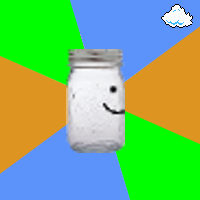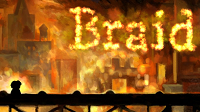 You saw Hario, and you revelled in its technical prowess. Now, the summer (winter) blockbuster of 2011 has arrived.
You saw Hario, and you revelled in its technical prowess. Now, the summer (winter) blockbuster of 2011 has arrived.
Jario is a port of Hario, and is similarly a very basic Mario clone, the quintessential platformer. From Hario’s C++ and HGE, Jario is running with Java and the Slick game library, as well as the brilliant Artemis entity-component framework, and it is an exploration of how to apply such a framework to a platformer-style game.
It’s currently in its very early stages after about a week of development from scratch, but it runs, and it already has more features than Hario. And although you may not believe it when you see it, it has superior graphics as well. There is no art more noble than that of a programmer.
It’s important to note that Jario is not a game so much as a proof of technology for the foundation of a game. As features are implemented it will become more game-like, and if I ever ‘finish’ it then it will perhaps be a game, but in my eyes it is just a body of code. The good news is that I can now refer to this code as I discuss Artemis and entity-component frameworks in general, which I certainly will get around to now. Jario is just the first step on the path to bigger and better things.
As usual, you can download the Web Start or run it in your browser. In addition, since it’s basically a piece of tech, I figured I should release the source code on Bitbucket to get some feedback from those with a little more Artemis experience. Finally, for this release there’s also a bonus feature: a pretty button for launching the Web Start! Behold:
NOTE: Google Chrome users (such as myself) may find this button just downloading a JNLP file rather than launching anything tangible. To resolve this, click the little down arrow next to the downloaded file on the downloads shelf (the toolbar across the bottom) and select “Always open files of this type”. This will tell Chrome to launch JNLPs automatically (as well as downloading) rather than making the user do it, just like the other browsers.
